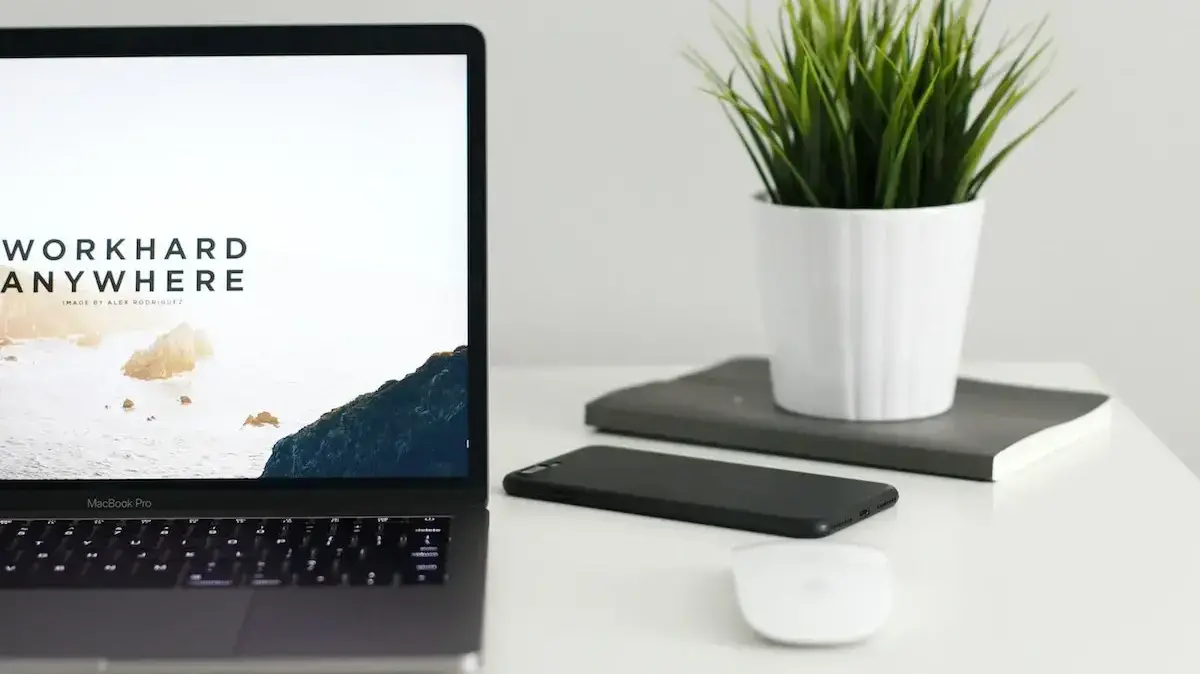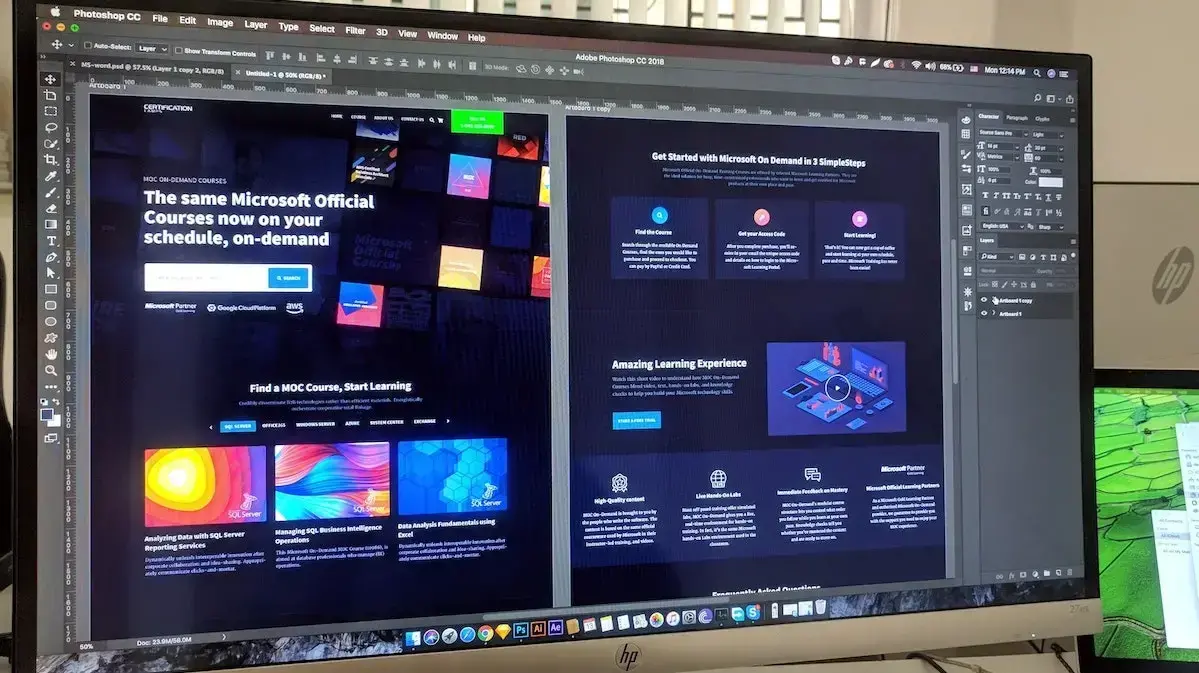If you're like most business owners, you know that having a website is a must - but figuring out what to do with that website can be tricky. You’ve bought your hosting plan, but what’s next?
There are so many design options and decisions to make, it's easy to feel overwhelmed. But don't worry, we're here to help! In this post, we'll walk you through seven types of effective website design.
What Is Website Design?
First, let's start with the basics Website design is the process of planning, creating, and maintaining a website. It encompasses everything from the site's layout and navigation to its color scheme and content. And while it may seem like a lot of work, designing a website doesn't have to be complicated or expensive. In fact, with a little planning and some creativity, you can create a website that's both stylish and functional.
Now that we've got the basics out of the way, let's take a look at several types of effective website design.
21 Types of Website Design
(proven to be effective)
1. Simple and Clean Design

A simple and clean website design is perfect for businesses that want to project a professional, sophisticated image. This type of design is also referred to as minimal design and is all about keeping things neat and orderly, which can give your site a sleek, modern look. To create a simple and clean website design, use plenty of whitespace, clean lines, and simple colors.
2. Mobile-Friendly Design
With more and more people using smartphones and tablets to access the internet (the majority, in fact), it's important to make sure your website is designed for mobile devices. A mobile-friendly website will have a layout that's easy to read and navigate on a small screen, as well as tap targets that are large enough to be tapped with a finger. To create a mobile-friendly website design, use responsive web design or a mobile-specific WordPress theme.
3. Prioritizing Whitespace
Whitespace is the empty space on a webpage, and it's an important part of effective website design. Whitespace can help to break up text and make your site more readable, as well as give it a clean, modern look. To use whitespace effectively, be sure to include plenty of margins and line breaks as well as padding around columns and other design assets.
4. Colorful Design

Color and imagery can be used to add visual interest to your website and make it more engaging. When choosing colors for your website, consider using a color scheme that's in line with your brand identity and don’t shy away from bold options. And when it comes to images, be sure to use high-quality photos that are relevant to your business.
5. Flat Design
Flat design is a type of minimalistic web design that's characterized by two-dimensional graphics and a lack of shadows or other dimensional effects. This type of design is perfect for businesses that want a modern look without committing entirely to minimalism.
6. Material Design
Material design is a type of flat design that's inspired by paper and ink. This style is characterized by bold colors, sharp lines, and realistic textures. Material design is perfect for businesses that want to add some style to their websites.
7. Skeuomorphic Design
Skeuomorphic design is a type of web design that can be identified by three-dimensional graphics and realistic textures. This style is often used to make websites look more like traditional offline applications. For example, the trashcan icon on a Mac computer is skeuomorphic because it is designed to look like a real trash can.
Skeuomorphic design can be traced back to the early days of personal computing when users were not yet familiar with how to use digital interfaces. The icons and menus were designed to look like real-world objects in order to help users understand their functions. Over time, this approach has fallen out of favor as users have become more comfortable with digital interfaces. However, some designers still argue that skeuomorphic design can be helpful in certain situations.
8. Parallax Scrolling
Parallax scrolling is a type of web design that's characterized by background images that move slower than foreground images, creating the illusion of depth. This effect can be used to add visual interest to your website and make it more engaging. To create a parallax scrolling website design, use a responsive web design or a mobile-specific theme.
9. Single-Page
The single-page web design trend has been around for a few years now, and there's no sign of it going away anytime soon. After all, what's not to love? Single-page designs are clean, concise, and easy to navigate. They're also incredibly user-friendly, which is why so many businesses are making the switch. However, there are a few things to keep in mind before you jump on the single-page bandwagon. For one, single-page designs can be a bit tricky to optimize for search engines. And secondly, they're not always the best choice for mobile users. But if you take the time to do things right, a single page web design can be a great way to showcase your business online.
10. Infinite Scroll
What is infinite scroll web design? In a nutshell, it's a design technique that allows users to keep scrolling down a web page indefinitely. Sounds great, right? No more clicking through to the next page - just one long, never-ending stream of content.
Now, you might be thinking, "Hey, that sounds a lot like Facebook or Twitter. I thought those sites were designed to be addictive." And you wouldn't be wrong. Social media sites have been using infinite scroll for years to keep users glued to their screens. But just because something works for Facebook doesn't mean it's right for every website. In fact, there are a number of drawbacks to using infinite scroll that you should be aware of before implementing it on your own site.
For one thing, infinite scroll can make it difficult for users to find the content they're looking for. With traditional pagination, users can click through to the specific page they want to see. With infinite scroll, they're stuck scrolling through an endless stream of content - which can be frustrating if they're trying to find something specific.
Another downside of infinite scroll is that it can adversely affect your site's SEO. Search engines index pages based on their URL, so if your content is spread out over an infinite number of pages, it will be much harder for search engines to find and index all of your content. This can ultimately hurt your site's visibility and ranking in search results.
11. Card-Based
Card-based web design is a great way to organize content in a way that is both visually appealing and easy to digest. But what exactly is card-based web design? In a nutshell, it's a style of web design that uses cards to hierarchy and present content in a way that is easy for users to scan and digest. Cards are usually stacked vertically, and each card contains a small amount of information, such as an image, headline, and short description.
This makes it easy for users to quickly scan through a lot of content and find the pieces that are most relevant to them. And because cards are self-contained units, they can be easily shuffled around and rearranged, making them perfect for responsive design.
Fullscreen web design is perfect for businesses that want to offer an immersive, user-friendly experience. This type of design is all about keeping things simple, which can help your site load faster and be more user-friendly. To create a fullscreen website design, use responsive web design or a mobile-specific theme.
12. Video Background
What's the best way to make a website stand out? By making it move, of course! Video background web design is a great way to add visual interest to your site and keep visitors engaged. And it's not just for fancy corporate websites - even small businesses can benefit from a little bit of motion on their pages.
13. Hamburger Menus
A hamburger menu is a type of navigation menu that consists of three horizontal bars. The name comes from the resemblance of the menu to a hamburger. When the menu is closed, only the three bars are visible. When the menu is opened, the hidden items are revealed.
The hamburger menu is a popular choice for responsive web design, as it can be easily adapted to different screen sizes. It is also simple to use, which makes it a good choice for mobile devices. However, the hamburger menu has some drawbacks. First, it can be difficult to learn how to use, and second, it can hide important information from users.
14. Sticky Headers
Sticky headers are a way to make your website headers stay in place as users scroll down the page. But why would you want to do that? Well, there are a few reasons. First, it can help to keep important navigation elements in view at all times. Second, it can give your site a more modern look and feel. And third, it can help to improve the user experience by making it easier for visitors to find what they're looking for.
15. Long-Form Content
Long-form content is simply a web page that is longer than usual. That's it! Some web pages are only a few hundred words long, while others are several thousand words long. But why the sudden interest in long-form content? Well, there are a few reasons.
First, search engines like Google tend to rank longer articles higher than shorter ones. This is because they see longer articles as being more informative and comprehensive. Second, people are increasingly using the internet to find information, and they often prefer longer articles that go into greater depth. Finally, longer articles give you more space to include images, videos, and other forms of multimedia, which can make them more engaging and enjoyable to read.
16. Storytelling
Storytelling web design uses elements like color, layout, and content to create a cohesive story that engages visitors and helps them make sense of a website. When done well, it can be an incredibly powerful tool for conveying a message and winning over customers or clients.
17. Interactive

Interactive web design is all about creating websites that are easy to use and enjoyable to interact with. By carefully considering the needs of both users and businesses, interactive designers are able to create websites that offer a truly unique experience.
23. Retro
Retro web design is perfect for businesses that want to offer a nostalgic, user-friendly experience. This type of design is all about keeping things simple, which can help your site load faster and be more user-friendly. To create a retro website design, use responsive web design or a mobile-specific theme.
When it comes to website design, there's no one-size-fits-all solution. The best way to choose the right type of design for your business is to consider your goals and objectives. Once you've done that, you can start exploring the different types of designs and see which one best fits your needs.
Which Type of Effective Web Design Will You Choose?
So, what say you? Will it be the modern minimalist trend or the retro classic look? Whichever you decide, make sure to keep your target audience in mind and give them a website they can be proud of. At the end of the day, it’s not about what looks cool or trendy- it’s about giving your customers an enjoyable experience that keeps them coming back for more.
Good luck!
Frequently Asked Questions
Is a website on WordPress safe?
Websites on WordPress are safe, however to avoid hacking keep your website up to date.
Why should I create a website?
There are many reasons why you should create a website if you’re an artist. You can use it to create a place where people can learn about you, talk about your art, or show off your work.
How do I choose a design for my website?
One of the most important things when creating a website for your art is the design. Even though your pieces of art might be amazing, people will leave if your site is hard to navigate. This is why it’s important that the site is easy on the eyes and easy to navigate.
Can you migrate my existing website over?
Yes, and without issue. Regardless of how many websites you’re managing, we’ll bring all of them under the Verpex wing free of charge. Just send us the details of your websites when you’ve signed up to get started.

Brenda Barron is a freelance writer and editor living in southern California. With over a decade of experience crafting prose for businesses of all sizes, she has a solid understanding of what it takes to capture a reader's attention.
View all posts by Brenda Barron




















